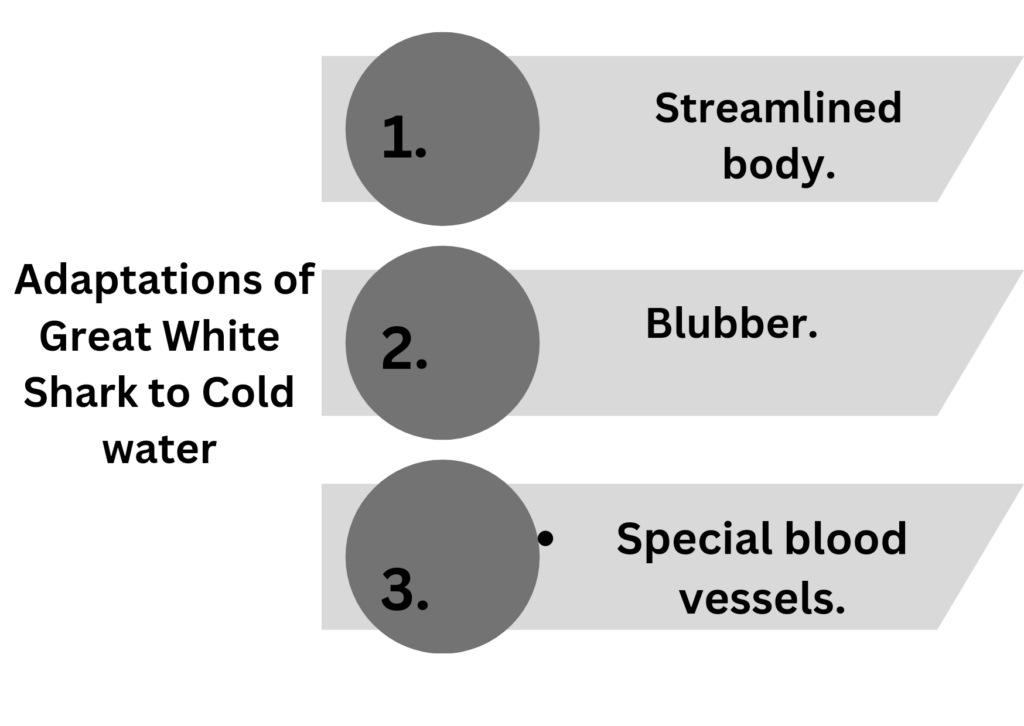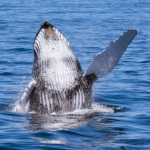
Key Takeaways
- Great white sharks are known to prefer cooler water temperatures, typically between 54-75 degrees Fahrenheit.
- However, recent studies have shown that some great white sharks are venturing into warmer waters, possibly due to changes in their prey distribution or ocean currents.
- The presence of great white sharks in warmer waters can have implications for beachgoers and coastal communities, as these sharks are known to occasionally interact with humans.
- Scientists are still studying the behavior and preferences of great white sharks in warm water to better understand their movements and potential impacts on ecosystems.
- It is important for researchers, conservationists, and policymakers to monitor and adapt to these changes in great white shark behavior to ensure the safety of both humans and the sharks themselves.
The ocean holds mysteries, like the behavior of great white sharks. These creatures have captivated many with their power and the mix of wonder and fear they bring. Do they prefer warm water? This article dives into this topic.
We must understand the basic biology of great white sharks. They can adapt to many environments and temperatures. But do they have a tendency for warmer waters?
Research suggests that while these apex predators don’t always seek warm water, they do like certain temperature ranges. Like many marine species, they are ectothermic, meaning their body temperature is controlled by their surroundings. Warmer water has advantages like increased metabolic activity and more prey. However, they can also thrive in cold water.
Migratory patterns also affect their preferences. Great whites undertake long journeys to different regions with varying temperatures.
Background on Great White Sharks
Great White Sharks fascinate scientists and the general public alike. Known for their power and striking presence, they are fierce predators of the deep. They have been around for millions of years. With their recognizable silhouette and sharp teeth, there is more to them than meets the eye.
These majestic creatures belong to the Lamnidae family, including Mako and Porbeagle. Streamlined bodies allow them to navigate water with precision and power.
An interesting aspect of Great White Sharks’ background is their affinity for warm water. Although commonly found in cold coastal regions, they prefer warmer temperatures. They migrate towards areas with abundant food sources and higher temperatures.
Fossil records date their ancestors to 60 million years ago during the Cenozoic era. Various traits make them unparalleled hunters in the underwater realm. Knowing their background reveals their significance in maintaining a balanced marine ecosystem.
The Relationship Between Great White Sharks and Water Temperature
To understand the relationship between great white sharks and water temperature, delve into the adaptations of these majestic creatures to cold water. Explore studies that focus on their specific preferences regarding water temperature. Discover how great white sharks navigate their environment and survive in various water conditions.
Adaptations of Great White Sharks to Cold Water

Great White Sharks have many adaptations that let them live in cold water. These adaptations include their streamlined bodies, a layer of fat called blubber, and special blood vessels.
Streamlined body: Great Whites have bodies shaped to reduce drag and let them swim fast in cold water.
Blubber: The thick blubber helps keep them warm in cold temperatures.
Special Blood Vessels: They have a system called “rete mirabile” that prevents heat loss in key areas.
These adaptations help the Great White Sharks survive in cold waters. With the streamlined body, they can quickly swim through icy water. The blubber insulates them and the special blood vessels retain heat.
Discover more about these amazing apex predators and their adaptations! Learn the secrets of the Great White Sharks today!
Studies on Great White Sharks and Water Temperature Preferences
Do great white sharks like warm water? Studies have shown that these apex predators’ behavior is affected by different water temperatures. From 10-15°C, they are less active. From 16-20°C, they become more moderate. Yet, they are most active when the temperature reaches 21-25°C.
It’s important to note that their preferences may depend on food availability and migration patterns. Still, understanding their affinity for certain water temperatures helps researchers better predict their behavior and habitats. So, yes, great whites do enjoy a bit of ‘hot tubbing’!
Do Great White Sharks Like Warm Water?

To gain insights into whether great white sharks prefer warm water, explore the factors influencing their preferences and observe examples of their behavior in such conditions. Factors such as food availability, mating habits, and thermal regulation guide the choices of these apex predators. Additionally, we can examine instances where great white sharks exhibit specific behaviors when encountering warmer waters.
Factors That Influence the Preferences of Great White Sharks
Great White Sharks have preferences that influence their behavior. These factors include water temperature, prey availability, and migration patterns. Colder waters often attract them, but they can also adapt to warmer temperatures for more prey. The presence of seals and sea lions further draws them to specific areas. They also follow the migration patterns of their favorite prey, leading them to preferred locations.
These important details help researchers and conservationists understand the sharks’ behavior and movement. Furthermore, some studies suggest that individual sharks may have individual preferences for certain habitats or hunting techniques. This adds complexity to the overall preferences of the species.
One example is Deep Blue, the massive female shark estimated to be over 20 feet long. Footage of her encounter with divers off the coast of Mexico’s Guadalupe Island captured public attention and highlighted the beauty and power of these creatures in their natural habitats.
Uncovering the factors that shape the preferences of Great White Sharks is an ongoing effort, driven by the desire to protect and conserve them. By understanding their needs, we can strive for better conservation efforts and coexist peacefully with these majestic creatures of the sea.
Examples of Great White Shark Behavior in Warm Water
In warm waters, Great White Sharks show off their interesting behaviors. Let’s explore a few!
Examples of Great White Shark Behavior in Warm Water:
| Behavior | Description | Impact |
|---|---|---|
| Bulls exhibit territorial behavior | Males guard their mating grounds | Ensures reproductive success |
| Sharks gather in large groups | More social interactions | Enhances hunting and mating strategies |
| Basking near the surface | Sunning for thermoregulation | Regulates body temperature |
| Bigger appetite | More feeding activities | Sustains energy levels |
| Longer migration distances | Traveling to warmer regions | Allows access to abundant prey |
These special behaviors display how Great White Sharks can live in warm water. Their territorial nature helps their reproduction. Plus, more social interactions help hunting and mating. Basking near the surface aids thermoregulation. A bigger appetite gives energy for longer periods. Lastly, longer distances reach regions with lots of prey.
Pro Tip: When you watch Great White Sharks in warm waters, stay back and respect their behavior for a great experience.
Conclusion: Whether great white sharks like warm water or not, one thing is clear – they love to explore and, sometimes, snack on surfers.
Frequently Asked Questions
1. Do great white sharks prefer warm water?
No, great white sharks are typically found in temperate and cool ocean waters. They are known to inhabit various regions with water temperatures ranging from 54°F (12°C) to 75°F (24°C).
2. Can great white sharks survive in warm water?
While great white sharks are capable of tolerating a wide range of water temperatures, they are generally more adapted to cooler waters. They may occasionally venture into warmer waters, but they do not prefer or thrive in such environments.
3. Are there any areas where great white sharks are more likely to be in warm water?
Although great white sharks may occasionally be found in warmer waters, they are most commonly associated with cooler coastal regions, such as the waters off California, South Africa, and Australia.
4. Why are great white sharks not commonly found in warm water?
The physiology of great white sharks is better suited for cooler waters. They have a high metabolic rate and rely on a specialized network of blood vessels and organs to maintain body temperature. Cooler waters help to regulate their body temperature more efficiently.
5. Do great white sharks migrate to warmer waters during certain seasons?
Yes, some great white sharks do migrate to warmer waters during specific seasons or for certain reasons, such as breeding or following food sources. However, this behavior is not common for all individuals and is not solely driven by their preference for warm water.
6. Are there any sharks that prefer warm water?
Yes, there are several shark species that are known to prefer or primarily inhabit warmer waters. Examples include the hammerhead shark, tiger shark, and bull shark, which have physiological adaptations that make them more suited to tropical and subtropical environments.
Conclusion
The majestic great white shark has long been a source of fascination and speculation. But do they really prefer warm water? It turns out they can survive in a variety of climates.
From the tropical waters of Australia, to the icy seas off South Africa, these creatures have been spotted everywhere. This is a testament to their adaptability and endurance.
Contrary to popular belief, great whites don’t just stick to warm water. They have been seen off New England and Canada too. Their ability to cover immense distances in search of food is truly remarkable.
Take Mary Lee, for example. She was tagged off Cape Cod in 2012, and then swam up and down the East Coast of the US, before crossing the Atlantic to Ireland. Her incredible journey inspired both marine biologists and shark fans.
References




